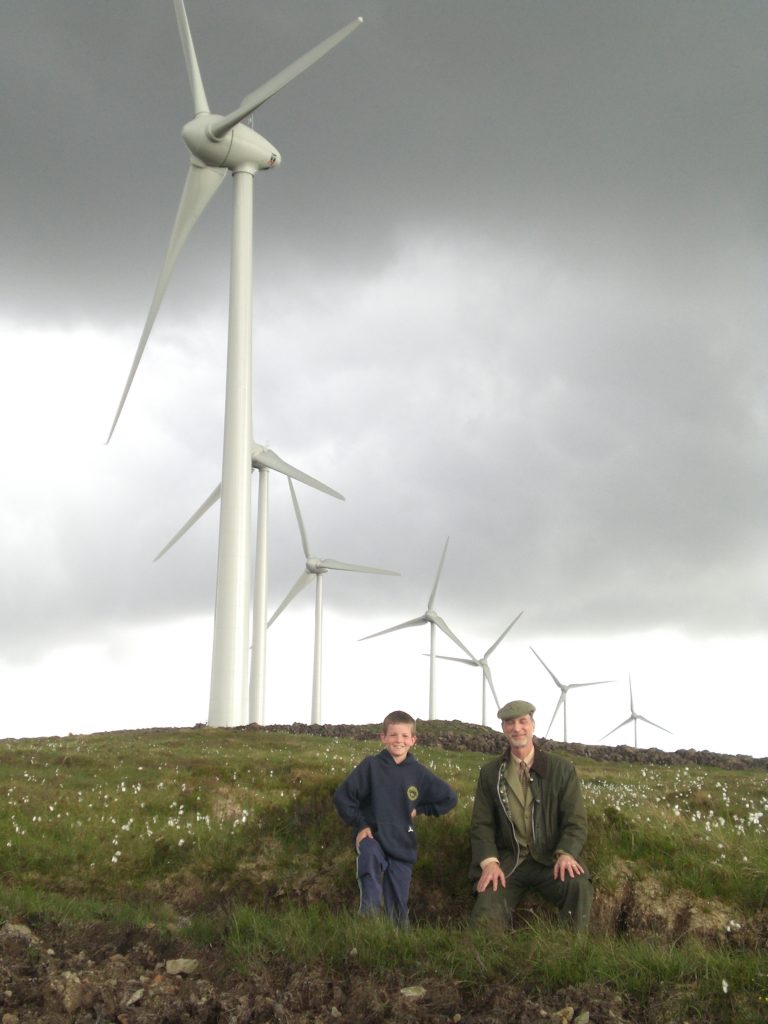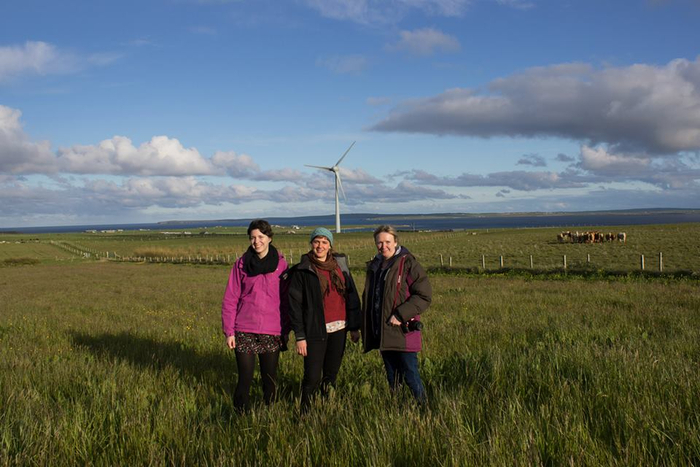While many communities are being asked to host large-scale renewables and transmission projects, we believe they should also be able to co-own or co-invest in them too.
Enabling models for communities to become co-investors in large-scale projects builds a groundswell of people directly invested in these projects’ success. These models create important opportunities for everyday folks to be involved in and benefit from the renewables boom. Community co-investment has been proven overseas (e.g. Denmark, Scotland, Canada) to increase community support and benefit from large scale projects.
Co-investment offers the community the chance to be invested (literally) in a project’s success – and enables communities to share in the rewards of harvesting the sun and the wind.
CPA Director Jarra Hicks was lucky enough to see this model in action when she visited the Isle of Skye in Scotland as part of her PhD research.
Isle of Skye is an incredibly beautiful and historic island and in the north of the island is an arc of 12 turbines that form the 28MW Ben Aketil Wind Farm. Local people were supported by Energy4All, a UK not-for-profit to establish the Skye Renewables Cooperative. Through the co-op, 570 people (most of whom are Skye residents) invested over A$1.6 million to purchase a 2.8% stake in the profits of the wind farm and are guaranteed a minimum return of 6.5% per year. At times the return has been 12%, thanks to the generous winds of the Western Isles of Scotland. Each year, the co-op distributes up to 5% of their income as grants to ‘green’ projects on Skye and the rest is returned to the local investors.


For the community, co-investment has ensured that a portion of the economic benefit from harvesting the wind stays in the local community and has led to a sense of community ownership in the project. For its members, the co-op is also an avenue for community action on climate change. For the people involved, it has given them a sense of satisfaction and positivity. Co-investment has built connection to and active support for the wind farm, and helped people to reconcile with the changes it has created in the landscape. As one community member explained:
“Turbines do have an impact on the local area, they do change the landscape, they become part of the landscape, they become part of Skye. So I think the more that the local people can feel that the wind farm is something that is part of them or is something that has some benefit for them – somebody hasn’t just come along and stuck them there – the better”.
For the wind farm developer and project owner, community co-investment helped to build positive relationships and social licence in the community, which eased their planning and approvals process. As the Development Manager explained:
“It improved our chances to get planning approval and it’s expensive to go through that process, so it’s important to do what you can to improve your chances of success. . . it’s the right thing to be engaging with local communities about projects because you are going to impact the local environment, because wind turbines are big structures. . . It helps to be talking about some of the positive benefits that can flow directly to the community, like community benefit funds and community ownership. . . if you can do that successfully and you can secure some happy investors, then that helps you with future projects because they can become advocates for renewable energy”
In Australia, co-investment opportunities are still a new concept. The Sapphire Wind Farm (Squadron Energy) in New South Wales was the first to open up a public investment process, attracting A$1.8 million of investment from roughly 100 investors, many of whom were local to the area. This model, delivered in partnership with the DomaCom, a managed investment fund, streamlined the offering for local people. Other wind farms, such as Western Plains (West Wind) and Delburn (OSMI), have since made commitments to offer community co-investment.
In the current context, where regional communities are being asked to host many new wind, solar and transmission projects, there is scope for co-investment to be a win-win.
Why shouldn’t regional communities be co-investors in a renewable future?
